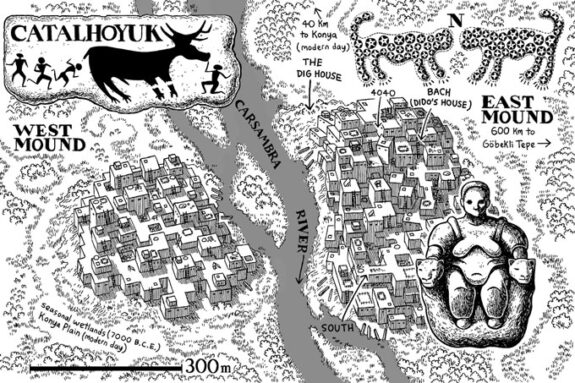


Alexandria flourished until the seventh century A.D., when it fell to Persian and then Arab conquerors. Hundreds of scholars there produced the first translation of the Old Testament from Hebrew to Greek. It was from Alexandria that the geographer Eratosthenes first measured the dimensions of the Earth. The Mouseion district included the Great Library, founded to collect, according to Aristeas, “all the books in the world.” (It was largely destroyed by fire during wars with Rome.) Some of the greatest minds of the ancient world made their homes in Alexandria, including Euclid, Archimedes, and Ptolemy. Greek, Egyptian, and Jewish scholars mingled among Alexandria’s temples of learning. during Alexander's travels, the city was accessible to Mediterranean trade, quickly becoming a crossroads of learning and culture. Today, much of the old city has sunk into the wet ground and sits under roughly 20 feet of water. The Mediterranean port of Alexandria, on the edge of Egypt’s Nile Delta, was the most famous city founded by Alexander the Great, king of the ancient Greek kingdom of Macedon. Alexandria, Egypt: epicenter of learning and culture How did this vibrant city vanish beneath the waves? Investigators believe a combination of earthquakes, accompanying tidal waves, and soft, liquefying soil led Thonis-Heracleion to sink under its own weight. Among other treasures were luxury Greek ceramics and 2,400-year-old wicker baskets filled with fruit. Underwater discoveries included figures of sphinxes and rulers, rings, coins, and a huge red granite statue of the Egyptian god Hapy, a symbol of abundance. More than 70 sunken ships and hundreds of anchors revealed Thonis-Heracleion as a bustling trade center on par with Babylon and Pompeii. Answers that would remain lost at the bottom of Lake Mead.Please be respectful of copyright.

By the 1950s it was already obvious to historians, archaeologists and anthropologists that the surviving artifacts of Lost City raised more questions than answers. All future study of the area would be limited to the hastily assembled collections and notes of the pre-Lake Mead archaeologists.

But for every discovery saved, myriad others were lost. Luckily, hundreds of sites remained above water and various artifacts were saved from the Lost City to be housed in the Lost City Museum of Archaeology in Overton, Nevada. Not all sites were drowned by the Lake, but the most representative, Pueblo Grande de Nevada (Lost City) was. Harrington was later assisted by members of the Civilian Conservation Corps as they rushed to complete excavations in areas that were to be covered by Lake Mead when Hoover Dam was built in 1938. Initial excavations of the sites were carried out in the mid-1920s by archaeologist Mark Raymond Harrington.


 0 kommentar(er)
0 kommentar(er)
